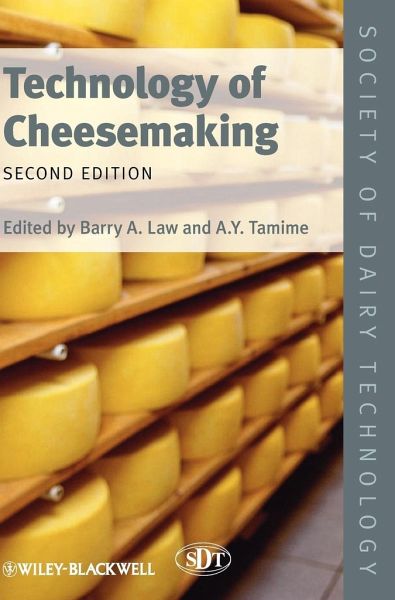
Technology Cheesemaking 2e
Versandkostenfrei!
Versandfertig in über 4 Wochen
253,99 €
inkl. MwSt.
Weitere Ausgaben:

PAYBACK Punkte
127 °P sammeln!
Now in a fully-revised new edition, this book covers the science and technology underlying cheesemaking, as practised today in the manufacture of hard, semi-soft and soft cheeses. Emphasis is placed on the technology, and the science and technology are integrated throughout. Authors also cover research developments likely to have a commercial impact on cheesemaking in the foreseeable future within the areas of molecular genetics, advanced sensor / measurement science, chemometrics, enzymology and flavour chemistry. In order to reflect new issues and challenges that have emerged since publicati...
Now in a fully-revised new edition, this book covers the science and technology underlying cheesemaking, as practised today in the manufacture of hard, semi-soft and soft cheeses. Emphasis is placed on the technology, and the science and technology are integrated throughout. Authors also cover research developments likely to have a commercial impact on cheesemaking in the foreseeable future within the areas of molecular genetics, advanced sensor / measurement science, chemometrics, enzymology and flavour chemistry. In order to reflect new issues and challenges that have emerged since publication of the first book, the new chapters are included on milk handling prior to cheesemaking; packaging; and major advances in the control of the end user properties of cheese using key manufacturing parameters and variables.
The volume has been structured to flow through the discrete stages of cheese manufacture in the order in which they are executed in cheese plants - from milk process science, through curd process science, to cheese ripening science and quality assessment.
Overall, the volume provides process technologists, product development specialists, ingredients suppliers, research and development scientists and quality assurance personnel with a complete reference to cheese technology, set against the background of its physical, chemical and biological scientific base.
The volume has been structured to flow through the discrete stages of cheese manufacture in the order in which they are executed in cheese plants - from milk process science, through curd process science, to cheese ripening science and quality assessment.
Overall, the volume provides process technologists, product development specialists, ingredients suppliers, research and development scientists and quality assurance personnel with a complete reference to cheese technology, set against the background of its physical, chemical and biological scientific base.



